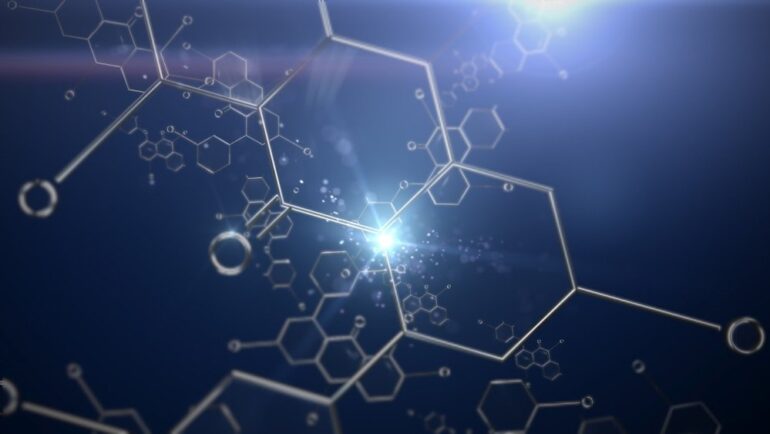TL;DR:
- Cutting-edge research demonstrates the potential of machine learning in predicting the ground-state electronic structure of organic molecules.
- Core-loss spectroscopy techniques, such as ELNES and XANES, provide valuable insights into atomic and electronic structures.
- Machine learning models accurately predict ground-state carbon s- and p-orbital partial density of states based on core-loss spectra.
- The exclusion of tiny molecules improves the prediction performance for larger molecules.
- Smoothing preprocessing and training with noise data enhance prediction accuracy for noisy spectra.
- The research unlocks new possibilities for understanding the relationship between atomic and electronic structures and nanomaterial properties.
Main AI News:
In a groundbreaking study recently published in The Journal of Physical Chemistry Letters, Po-Yen Chen, Kiyou Shibata, Katsumi Hagita, Tomohiro Miyata, and Teruyasu Mizoguchi have demonstrated the remarkable potential of machine learning in accurately predicting the ground-state electronic structure of organic molecules (1). Their research focuses on harnessing core-loss spectra to uncover unoccupied states, forging a path toward innovative advancements in nanomaterial characterization and the tailored design of properties.
The comprehension and design of nanomaterials with specific properties rely heavily on the analysis of local atomic and electronic structures. Core-loss spectroscopy, which encompasses cutting-edge techniques such as energy loss near-edge spectroscopy (ELNES) and X-ray absorption near-edge structure (XANES), has emerged as an indispensable tool due to its ability to provide exceptional spatial resolution and sensitivity when characterizing the atomic and electronic structures of materials.
By leveraging core-loss spectroscopy, researchers gain valuable insights into the intricate atomic and electronic structures of materials. ELNES involves the precise measurement of energy loss experienced by electrons during interactions with atoms, unveiling critical information about unoccupied states and local atomic environments.
Conversely, XANES examines the absorption of X-rays by atoms, revealing intricate details regarding the electronic structure and oxidation states of materials. Both techniques offer exceptional spatial resolution and sensitivity, making them invaluable in the characterization of nanomaterials, as well as in comprehending catalysis, chemical reactions, and the dynamic behavior of materials. Notably, ELNES spectra have proven particularly useful in discerning local electronic and atomic structures, such as those present in graphene.
Despite the wealth of information offered by core-loss spectra, challenges arise when attempting to extract data on molecular properties dictated by the ground-state electronic structure. To overcome this hurdle, the research team embarked on a pioneering endeavor, constructing a machine learning model with the capability to predict the ground-state carbon s- and p-orbital partial density of states (PDOS) in both occupied and unoccupied states based on the C K-edge spectra.
The study also delved into the extrapolation prediction of PDOS for larger molecules using a model trained on smaller molecules. Interestingly, the researchers discovered that excluding minuscule molecules significantly enhanced the extrapolation prediction performance. Moreover, the application of smoothing preprocessing techniques and training with specific noise data proved to be instrumental in improving PDOS prediction accuracy for spectra contaminated with noise. These findings open up promising avenues for employing the prediction model in experimental data.
The implications of this research are vast, as it unlocks new possibilities for understanding the intricate relationship between local atomic and electronic structures and the properties exhibited by nanomaterials. By harnessing the immense power of machine learning in conjunction with core-loss spectroscopy, scientists can gain invaluable insights into catalysis, oxidation states, chemical reactions, and the dynamic behavior of materials.
Conclusion:
The integration of machine learning with core-loss spectroscopy represents a monumental breakthrough in the characterization of nanomaterials. This research enables scientists to accurately predict the ground-state electronic structure of organic molecules, providing unprecedented insights into atomic and electronic properties. By leveraging machine learning models, researchers can now uncover crucial information about the molecular structures of nanomaterials, paving the way for innovative advancements in diverse fields such as catalysis, oxidation states, chemical reactions, and materials dynamics.
This groundbreaking work has far-reaching implications for the market, as it opens up new avenues for designing tailored nanomaterials with enhanced properties, revolutionizing industries ranging from electronics to healthcare and beyond. The fusion of machine learning and core-loss spectroscopy holds immense potential to drive innovation and shape the future of the materials science market.

